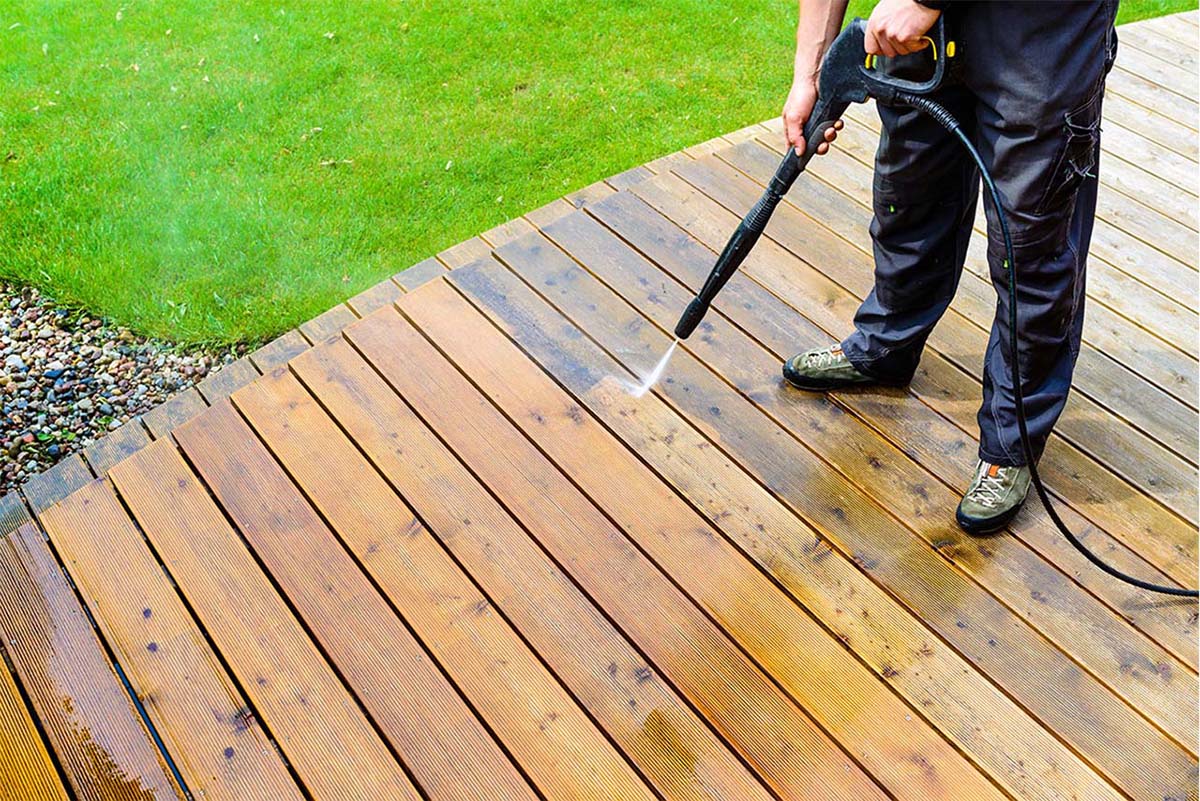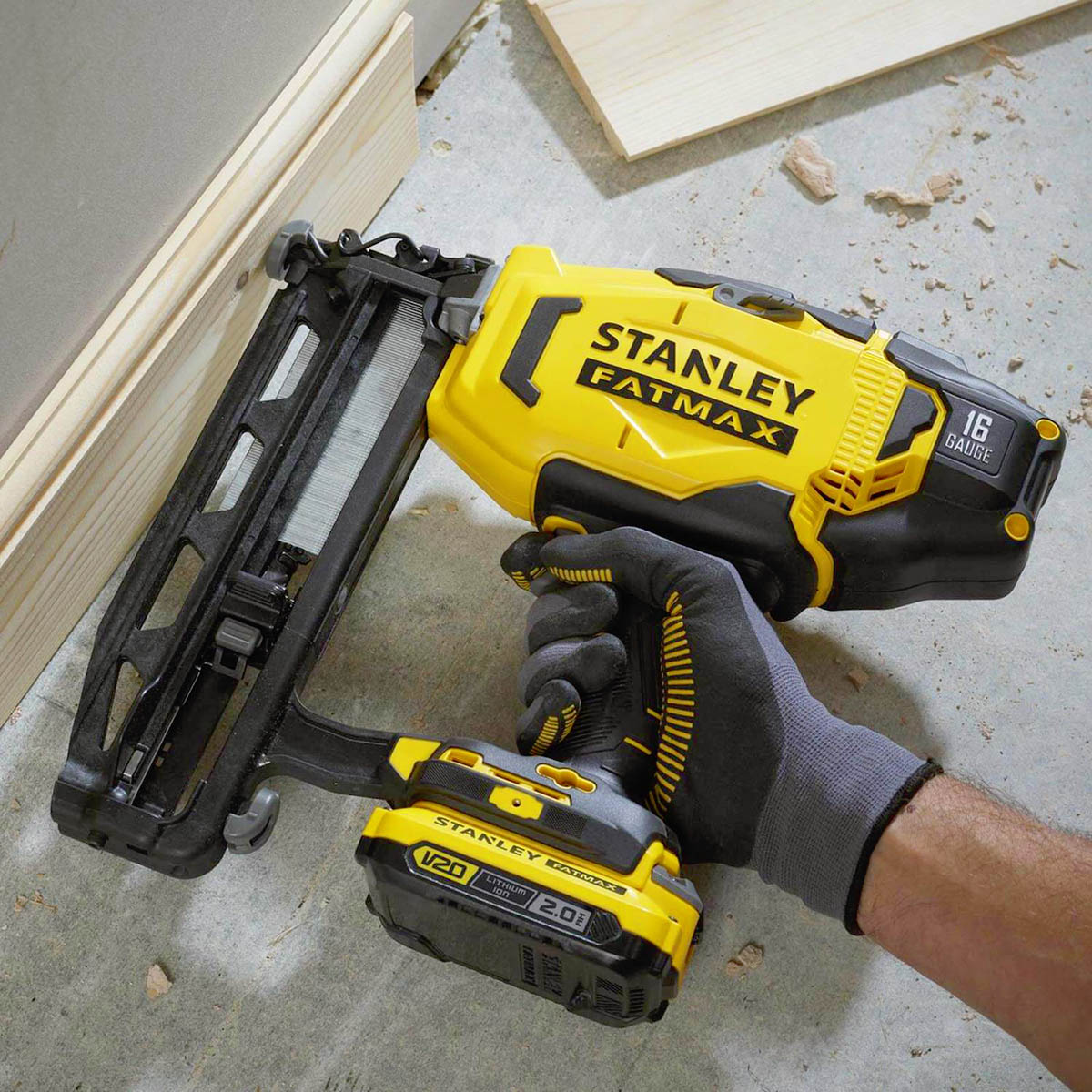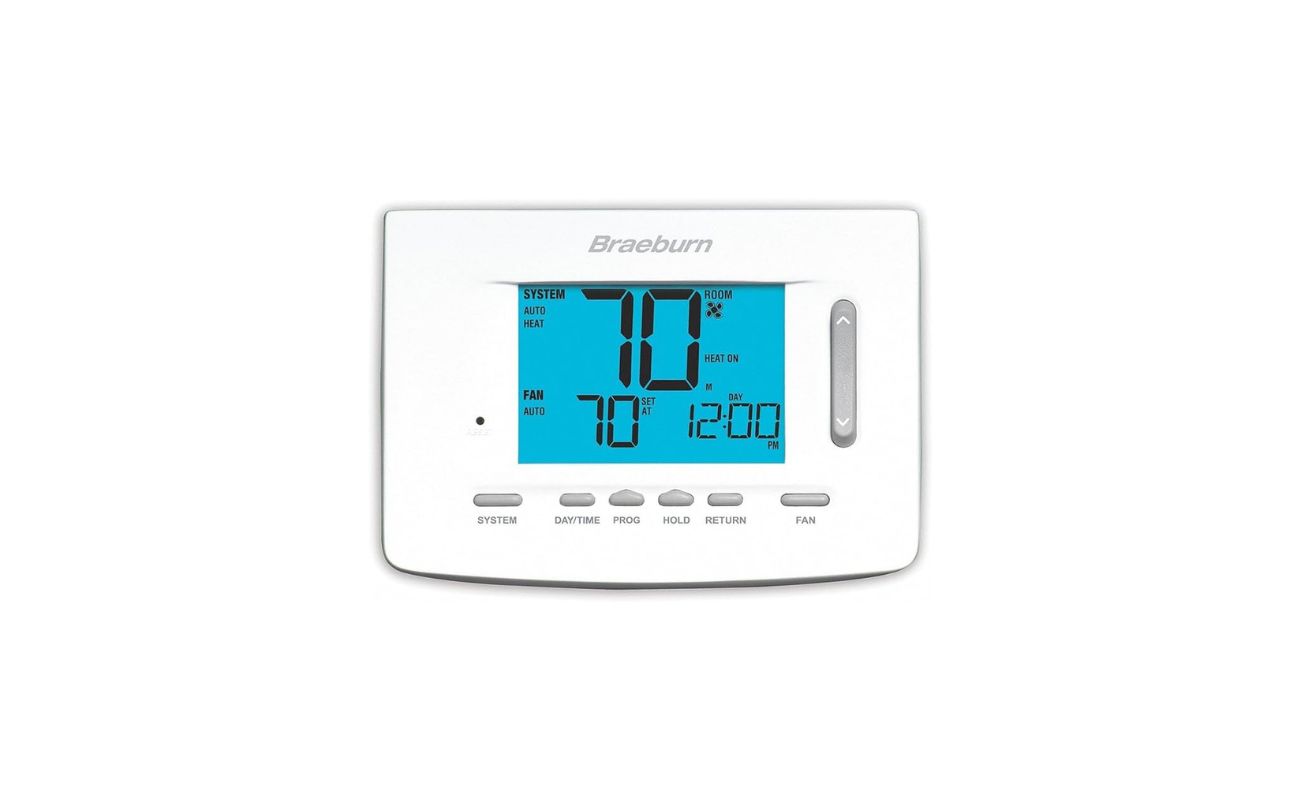Home>Furniture>Outdoor Furniture>How Do I Treat My Decking


Outdoor Furniture
How Do I Treat My Decking
Modified: March 7, 2024
Looking for ways to treat your outdoor furniture decking? Discover effective techniques for maintaining your outdoor-furniture, ensuring its longevity and beauty.
(Many of the links in this article redirect to a specific reviewed product. Your purchase of these products through affiliate links helps to generate commission for Storables.com, at no extra cost. Learn more)
Introduction
Welcome to our comprehensive guide on how to treat your decking. Whether you have a wooden deck, composite deck, or any other type of outdoor decking, proper maintenance is essential to keep it looking its best and ensure its longevity. With regular care and attention, you can protect your decking from wear and tear, weather damage, and other common issues.
In this article, we will provide you with valuable tips and techniques to help you clean, restore, seal, protect, and prevent various problems that may arise with your decking. By following these steps, you can enhance the appearance and durability of your outdoor space, allowing you to enjoy it for years to come.
So, let’s dive in and learn how to treat your decking effectively!
Key Takeaways:
- Regularly cleaning and maintaining your deck is crucial to preserve its appearance and extend its lifespan. Sweeping, removing dirt, treating stains, and preventing mold growth are essential for overall upkeep.
- Restoring and repairing your deck, sealing and waterproofing it, and protecting against fading and discoloration are key steps to ensure its longevity and visual appeal. Regular inspections and proactive measures help prevent rot and decay.
Read more: How Many Deck Blocks Do I Need For A Shed
Cleaning and Maintenance
Regularly cleaning and maintaining your deck is crucial to preserve its appearance and extend its lifespan. Here are some key steps you should take:
Regular Sweeping and Cleaning:
The first step in maintaining your deck is to sweep away any loose dirt, leaves, and debris. Using a broom or a leaf blower, remove the surface-level particles that can accumulate and cause damage over time.
Once the surface is clear, you can proceed with deeper cleaning. Use a garden hose or a power washer on a low setting to remove any dirt or grime that has built up. Start from one end of the deck and work your way to the other, ensuring thorough coverage.
Removing Dirt and Debris:
For more stubborn dirt or debris, you may need to use a mild detergent or deck cleaner. Mix the cleaner according to the instructions and apply it to the deck surface using a stiff brush or a mop. Scrub the surface gently, paying extra attention to any heavily soiled areas. Rinse the deck thoroughly afterward to remove all traces of cleaner.
Treating Stains:
If your deck has stubborn stains, such as grease or rust, there are specific stain removers available that can help. Follow the manufacturer’s instructions for application and allow the stain remover to sit for the recommended amount of time before rinsing it off. For particularly tough stains, you may need to repeat the process or seek professional assistance.
Read more: How Do I Reboot My Alexa
Preventing Mold and Mildew Growth:
Mold and mildew can quickly take hold on a deck, especially in areas with high humidity or excessive moisture. To prevent their growth, it’s essential to keep your deck dry and well-ventilated. Trim any nearby foliage that may block airflow and remove any standing water on the deck’s surface. Regularly inspect and repair any areas where water may be pooling, such as around planters or under furniture.
By implementing these cleaning and maintenance practices, you can keep your deck looking clean, prevent stains, and minimize the risk of mold and mildew growth.
Restoring and Repairing
Over time, your deck may start to show signs of wear and damage. Restoring and repairing your deck will not only improve its appearance but also ensure its structural integrity. Here are the key steps to follow:
Inspecting for Damage:
Regularly inspect your deck for any signs of damage, such as rot, loose boards, or protruding nails. Check the posts, beams, and joists for signs of decay or weakening. Look for any cracks or splintered wood that may need attention. Identifying and addressing these issues early on can prevent further damage and costly repairs down the line.
Replacing Loose or Damaged Boards:
If you notice any loose or damaged boards during your inspection, it’s important to replace them promptly. Use a pry bar or a screwdriver to carefully remove the affected boards. Ensure that the replacement boards match the existing ones in terms of size and type of wood. Secure them in place with screws or nails, making sure they are flush with the surrounding boards.
Read more: How Do I Insulate My Shed
Sanding and Refinishing:
To revive the appearance of your deck and smooth out any rough areas, sanding is necessary. Use a belt sander or a handheld sander with medium-grit sandpaper to remove old finishes, stains, or surface imperfections. Work in the direction of the wood grain and be careful not to apply too much pressure, as it can damage the wood. After sanding, clean the deck thoroughly to remove any dust or debris.
If you desire a new look or want to enhance the natural color of the wood, refinishing is the next step. Apply a wood stain or sealant of your choice using a brush, roller, or sprayer. Follow the manufacturer’s instructions for application and drying times. Ensure that the finish is even and let it cure completely before placing any furniture or walking on the deck.
Applying Protective Coatings:
To provide extra protection to your deck, consider applying a protective coating, such as a water repellent or a deck sealer. These coatings help to minimize moisture absorption, prevent wood rot, and extend the life of your deck. Ensure that the deck surface is clean and dry before applying the protective coating. Use a brush or a roller to evenly coat the wood, working in small sections at a time. Allow sufficient drying time before subjecting the deck to foot traffic or outdoor elements.
By regularly inspecting, repairing, sanding, and refinishing your deck, as well as applying protective coatings, you can restore its beauty and ensure its longevity.
Sealing and Waterproofing
Sealing and waterproofing your deck is an essential step in protecting it from moisture damage, UV rays, and the elements. Here’s a guide on how to properly seal and waterproof your deck:
Choosing the Right Sealant:
When it comes to sealing your deck, there are various options available, including clear sealers, semi-transparent stains, and solid-color stains. Clear sealers allow the natural beauty of the wood to show through, while stains provide color and added protection. Consider the type of wood your deck is made of, your desired level of transparency or color, and the level of protection needed when selecting a sealant. Consult with a professional or the manufacturer’s recommendations to ensure you choose the right product for your deck.
Read more: How Do I Cover My Balcony
Cleaning and Preparing the Surface:
Before applying the sealant, it’s crucial to clean and prepare the deck surface properly. Start by removing any loose dirt, debris, or old finish using a broom or a stiff brush. Next, wash the deck using a deck cleaner, paying close attention to any stained or heavily soiled areas. Follow the manufacturer’s instructions for mixing and applying the cleaner. Rinse the deck thoroughly and allow it to dry completely before moving on to the next step.
Applying the Sealant:
Once the deck is clean and dry, it’s time to apply the sealant. Stir the sealant well and use a brush, roller, or sprayer to evenly apply a thin coat to the deck surface. Work in small sections, starting from one end and moving towards the other. Ensure that the sealant is applied evenly and that any excess is wiped away. Pay special attention to the areas prone to moisture, such as the edges and the underside of the deck boards. Allow the sealant to dry according to the manufacturer’s instructions, and if necessary, apply a second coat for added protection.
Regularly inspect your sealed deck for signs of wear and reseal it as needed. The frequency of resealing will depend on the type of sealant used, the climatic conditions, and the amount of foot traffic your deck receives.
By properly sealing and waterproofing your deck, you can safeguard it against moisture damage, preserve its natural beauty, and enhance its durability.
Protecting Against Fading and Discoloration
One common issue that outdoor decks face is fading and discoloration due to exposure to sunlight and other environmental factors. Protecting your deck from this can help maintain its vibrant appearance for longer. Here are some ways to minimize fading and discoloration:
Minimizing Exposure to Sunlight:
Sunlight is a major contributor to the fading and discoloration of deck surfaces. One way to protect against this is by strategically placing furniture, potted plants, or umbrellas to provide shade to your deck. You can also consider installing awnings or pergolas to create a shaded area. This will help minimize direct sunlight exposure and reduce the chances of fading.
Read more: How Do I Connect My Boombox To My Phone
Using UV-Resistant Stains or Paints:
To add an extra layer of protection against fading and discoloration, consider using UV-resistant stains or paints. These specially formulated products offer enhanced UV protection, helping to slow down color fading caused by prolonged sun exposure. When selecting a stain or paint, look for one specifically labeled as UV-resistant and follow the manufacturer’s instructions for application and maintenance.
Applying a Clear Coat:
Another option to protect your deck from fading and discoloration is to apply a clear coat. Clear coats are transparent sealants that provide an additional barrier against UV rays while allowing the natural beauty of the wood to shine through. Before applying a clear coat, ensure that your deck is clean and dry. Use a brush or a roller to apply the clear coat evenly, following the manufacturer’s instructions for drying times and number of coats. A clear coat can help preserve the color and prevent graying of the wood over time.
Remember to regularly maintain and reapply these protective measures as needed, especially if your deck is exposed to harsh sunlight on a regular basis or experiences heavy foot traffic.
By minimizing sun exposure, using UV-resistant stains or paints, and applying a clear coat, you can protect your deck against fading and discoloration, ensuring that it remains vibrant and beautiful for years to come.
Preventing Rot and Decay
Preventing rot and decay is crucial for maintaining the structural integrity of your deck. Moisture is the primary cause of rot and decay, so it’s essential to take proactive steps to protect your deck. Here are some key measures to prevent rot and decay:
Regularly Inspecting for Moisture Damage:
Regularly inspect your deck for any signs of moisture damage, such as soft or spongy areas, discoloration, or mold growth. Pay close attention to the areas that come into contact with the ground or receive constant moisture exposure, such as the posts, joists, and the underside of your deck. Identifying and addressing moisture issues early on can help prevent further damage and costly repairs.
Read more: When To Start Treating My Grass
Promptly Treating Rotted or Decaying Areas:
If you notice any rotted or decaying areas during your inspection, it’s imperative to address them promptly. Use a screwdriver or a probe to test the wood for softness or decay. If necessary, remove the affected boards or sections and replace them with new ones. Ensure that the replacement wood is properly treated, sealed, or pressure-treated to resist moisture and fungal growth.
In some cases, you may need to consult a professional contractor or structural engineer to assess and repair significant rot or decay issues. They can provide guidance on the best course of action and ensure the structural stability of your deck.
Enhancing Drainage and Ventilation:
Proper drainage and ventilation are vital for preventing moisture buildup, which can lead to rot and decay. Clear any debris or leaves that may accumulate in deck gaps or obstruct drainage. Ensure that the ground surrounding your deck has proper grading to encourage water to flow away from the structure. Additionally, consider installing deck ventilation systems or using lattice panels to allow for airflow underneath the deck, reducing moisture buildup.
Regularly maintaining these prevention measures is essential to keep your deck in good condition. Conduct inspections, address moisture damage promptly, and enhance drainage and ventilation to safeguard against rot and decay.
By implementing these practices, you can enjoy a durable and long-lasting deck that withstands the test of time.
Conclusion
Properly treating your decking is crucial for maintaining its aesthetics, durability, and structural integrity. By following the steps outlined in this comprehensive guide, you can keep your outdoor space looking beautiful and ensure that your decking lasts for years to come.
Regular cleaning and maintenance, such as sweeping, removing dirt and debris, treating stains, and preventing mold and mildew growth, are essential for the overall upkeep of your deck. Restoring and repairing any damage, including inspecting for rot, replacing loose boards, sanding, refinishing, and applying protective coatings, will help refresh your deck’s appearance and protect it from further deterioration.
Sealing and waterproofing your deck is key in preventing moisture damage. Make sure to choose the right sealant, clean and prepare the surface properly, and apply the sealant evenly for optimal protection. Additionally, taking steps to protect against fading and discoloration, such as minimizing sunlight exposure, using UV-resistant stains or paints, and applying a clear coat, will help maintain your deck’s vibrant color and beauty.
To prevent rot and decay, be proactive in regularly inspecting for moisture damage, promptly treating any rotted or decaying areas, and enhancing drainage and ventilation around your deck. These actions will ensure that your deck remains structurally sound and free from moisture-related issues.
In conclusion, proper treatment of your decking is essential for its longevity and visual appeal. By following the guidelines and steps provided in this guide, you can enjoy a well-maintained and beautiful deck that enhances your outdoor living space for many years to come.
Remember, if you have any concerns or come across more significant issues, it’s always beneficial to seek the advice of a professional deck contractor or expert to ensure the best possible care and maintenance for your specific decking material.
Frequently Asked Questions about How Do I Treat My Decking
Was this page helpful?
At Storables.com, we guarantee accurate and reliable information. Our content, validated by Expert Board Contributors, is crafted following stringent Editorial Policies. We're committed to providing you with well-researched, expert-backed insights for all your informational needs.











0 thoughts on “How Do I Treat My Decking”